Do you have a question about the GE PQM II and is the answer not in the manual?
Describes true RMS monitoring of electrical parameters like voltage, current, power, and frequency.
Explains configurable alarm conditions for various measured quantities like overcurrent, unbalance, and frequency.
Details RS485 and RS232 ports for system integration, data monitoring, and troubleshooting.
Describes analog outputs for PLC interface and an analog input for transducer data.
Details additional output relays and switch inputs for flexible control applications.
Covers harmonic analysis for power quality review and problem correction.
Details specifications for current, voltage, switch, analog, and pulse inputs/outputs.
Specifies parameters for triggering trace memory recording based on over/undervoltage levels.
Provides specifications for the MAKE/CARRY and BREAK ratings of output relays.
Details accuracy and range specifications for various measured metering values.
Specifies system parameters including communications, baud rate, protocols, and clock accuracy.
Provides physical dimensions and required cutout dimensions for panel mounting the PQMII.
Details external connections for VT/Control Power, CTs, and Signal wiring to PQMII terminals.
Illustrates typical wiring diagrams for various system configurations like 4-wire wye and 3-wire delta.
Explains the requirements and connection of control power to the PQMII unit.
Details PQMII voltage input specifications and requirements for direct or VT-supplied connections.
Specifies PQMII current transformer input requirements, including secondary ratings and polarity.
Describes the PQMII's alarm and auxiliary output relays, their contacts, and ratings.
Details the four programmable switch inputs and their internal circuitry.
Covers the four analog outputs, their configuration for 4-20mA or 0-1mA, and multiplexing.
Describes the analog input for current signals and its connection to PQMII terminals.
Explains the functionality and connection of COM1 and COM2 RS485 serial ports.
Details the front panel RS232 port for programming the PQMII with a PC.
Provides minimum system requirements and step-by-step instructions for installing the setup software.
Details the procedure for configuring serial communications between the PQMII and a PC using the setup software.
Explains how to upgrade PQMII firmware, mentioning availability on the GE Multilin website.
Illustrates entering setpoints using the setup software's GUI, including numeric and dropdown selections.
Covers harmonic analysis for power quality issues caused by non-linear loads.
Details the trace memory feature for recording various conditions and parameters.
Explains the data logger feature for continuously logging specified parameters at a defined rate.
Describes the voltage disturbance recorder for monitoring and recording sag and swell events.
Details methods for programming setpoints via front panel, RS485, RS232, or SCADA systems.
Details configuration for COM1 RS485, COM2 RS485, and front panel RS232 serial ports.
Details PQMII configuration for phase CT wiring, primary ratings, and VT wiring.
Explains configuring analog outputs for 4-20mA or 0-1mA and assigning parameters to MAIN/ALT.
Details configuration for analog input, including names, units, values, and relay assignments.
Details setpoints for phase/neutral undercurrent, overcurrent, and undervoltage alarms.
Displays phase and neutral currents, averages, unbalance, and min/max values.
Displays phase and line voltages, averages, unbalance, and min/max values.
Displays three-phase and individual phase real, reactive, apparent power, and power factor.
Describes true RMS monitoring of electrical parameters like voltage, current, power, and frequency.
Explains configurable alarm conditions for various measured quantities like overcurrent, unbalance, and frequency.
Details RS485 and RS232 ports for system integration, data monitoring, and troubleshooting.
Describes analog outputs for PLC interface and an analog input for transducer data.
Details additional output relays and switch inputs for flexible control applications.
Covers harmonic analysis for power quality review and problem correction.
Details specifications for current, voltage, switch, analog, and pulse inputs/outputs.
Specifies parameters for triggering trace memory recording based on over/undervoltage levels.
Provides specifications for the MAKE/CARRY and BREAK ratings of output relays.
Details accuracy and range specifications for various measured metering values.
Specifies system parameters including communications, baud rate, protocols, and clock accuracy.
Provides physical dimensions and required cutout dimensions for panel mounting the PQMII.
Details external connections for VT/Control Power, CTs, and Signal wiring to PQMII terminals.
Illustrates typical wiring diagrams for various system configurations like 4-wire wye and 3-wire delta.
Explains the requirements and connection of control power to the PQMII unit.
Details PQMII voltage input specifications and requirements for direct or VT-supplied connections.
Specifies PQMII current transformer input requirements, including secondary ratings and polarity.
Describes the PQMII's alarm and auxiliary output relays, their contacts, and ratings.
Details the four programmable switch inputs and their internal circuitry.
Covers the four analog outputs, their configuration for 4-20mA or 0-1mA, and multiplexing.
Describes the analog input for current signals and its connection to PQMII terminals.
Explains the functionality and connection of COM1 and COM2 RS485 serial ports.
Details the front panel RS232 port for programming the PQMII with a PC.
Provides minimum system requirements and step-by-step instructions for installing the setup software.
Details the procedure for configuring serial communications between the PQMII and a PC using the setup software.
Explains how to upgrade PQMII firmware, mentioning availability on the GE Multilin website.
Illustrates entering setpoints using the setup software's GUI, including numeric and dropdown selections.
Covers harmonic analysis for power quality issues caused by non-linear loads.
Details the trace memory feature for recording various conditions and parameters.
Explains the data logger feature for continuously logging specified parameters at a defined rate.
Describes the voltage disturbance recorder for monitoring and recording sag and swell events.
Details methods for programming setpoints via front panel, RS485, RS232, or SCADA systems.
Details configuration for COM1 RS485, COM2 RS485, and front panel RS232 serial ports.
Details PQMII configuration for phase CT wiring, primary ratings, and VT wiring.
Explains configuring analog outputs for 4-20mA or 0-1mA and assigning parameters to MAIN/ALT.
Details configuration for analog input, including names, units, values, and relay assignments.
Details setpoints for phase/neutral undercurrent, overcurrent, and undervoltage alarms.
Displays phase and neutral currents, averages, unbalance, and min/max values.
Displays phase and line voltages, averages, unbalance, and min/max values.
Displays three-phase and individual phase real, reactive, apparent power, and power factor.
| Brand | GE |
|---|---|
| Model | PQM II |
| Category | Measuring Instruments |
| Language | English |

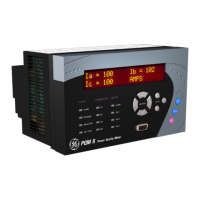
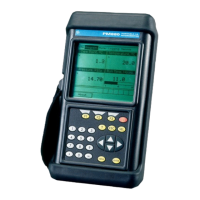
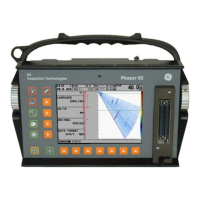
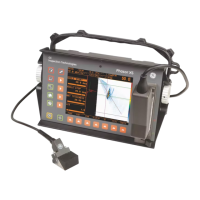


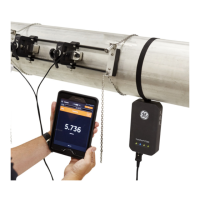
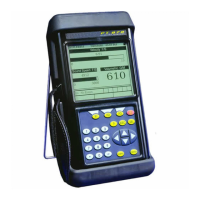

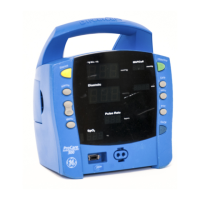
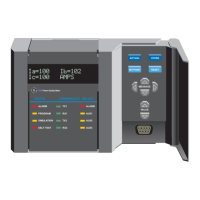
